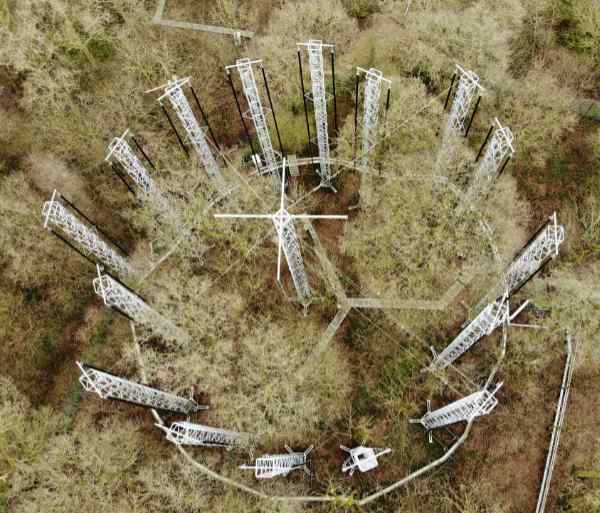Images of climate innovation
Sci-fi forest travels to 2050
How will forest's carbon capture function react to elevated atmospheric carbon dioxide levels expected by 2050? Will forests be able to absorb a portion of the extra carbon dioxide or will they be limited by the availability of nutrients, water, and/or changes in the resilience of trees to disease? The University of Birmingham's Institute of Forest Research's (BIFoR) provides essential scientific evidence regarding the role of forests in climate change mitigation through a unique experimental Free Air Carbon Enrichment (FACE) facility.

Land-based natural ecosystems including forests currently absorb about 33% of the carbon dioxide (CO2) emitted by humans into the atmosphere. However, we do not know how forests will react to the elevated atmospheric carbon dioxide levels expected by 2050 and beyond. Will carbon capture by forests enhance with increasing CO2 concentration in the future or will this capacity be constrained by the availability of other growth limiting factors such as nutrients, water, and/or resilience of trees to disease.
These questions are of utmost importance as they affect the role of global forests in climate forecasts and policy options for limiting global warming to 1.5 to 2.0 degrees centigrade. Climate change models need a robust value for how much CO2 can be absorbed by land plants now and in the future.
To address these fundamental questions, BIFoR FACE is the first Free-Air Carbon Enrichment (FACE) facility in mature woodlands in the northern temperate climates. The infrastructure was installed across six experimental plots, where 96 masts were slotted into place using a special helicopter. Walkways enable researchers to access their experiments without disturbing the soil or vegetation.
Liquid CO2 is delivered by tankers, vaporised, and warmed; then, using extensive pipework, it enters the experimental forest plots. In each 30-m diameter plot, we regulate the fumigation of the whole trees with CO2 to achieve 150 parts per million (ppm) CO2 above the ambient CO2 concentration, thus exposing the woodland to ~560 ppm of atmospheric CO2 that is broadly representative of future climates (of 2050 and beyond).
Our decadal-scale experimental research (2016-2026) findings will allow policymakers to make more informed decisions about the role of forests in climate change mitigation and the future of the planet Earth. The project is highly collaborative and involves the contributions of a large number of skilled people - there are over 50 research projects underway including extensive PhD studentships.
Entrant: Sami Ullah , Birmingham Institute of Forest Research (BIFoR) at the University of Birmingham
Copyright: Sami Ullah
Funding: JABBS Foundation; University of Birmingham; John Horseman Trust; Natural Environment Research Council (NERC), National Science Foundation and the Newton Fund.
Collaborators: Amazon FACE; EuC-FACE; UK Centre for Ecology and Hydrology; CSIRO; Earthwatch Institute; Laboratoire des Sciences due Climate et de l’Environment (LSSCE); Met Office; Max Planck Institute for Biogeochemistry; National Centre for Atmospheric Research (NCAR); Natural England; NIAB and University of Tennesse; Forest Research; Universities of Bangor, Bristol, California Davis, Exeter, Harper Adams, Helsinki, Imperial College London, Keele, Leicester Lancaster, Lund, Manchester, Munich, New South Wales (Australia) Plymouth, Reading, Southampton, Stafford, Swansea, Tianjin Normal University (China), Warwick, Western Sydney, Unicamp (Brazil) and the Open University.
Links
For further information, contact: s.ullah@bham.ac.uk